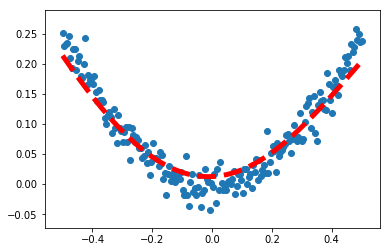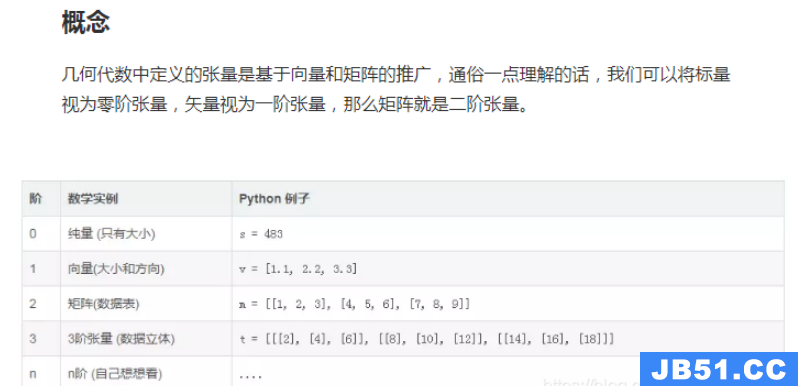placeholder用法
tf.placeholder(dtype, shape=None, name=None)
TensorFlow中的占位符,用于传入外部数据。
参数:
dtype:数据类型。
shape:数据的维度。
默认为None,表示没有限制
name:名称返回类型:
TensorTensorFlow中加载图片的维度为[batch, height, width, channels]
故placeholder的shape可写为[None, None, None, 3]
x_data=np.linspace(-0.5,0.5,200)[:,np.newaxis]
noise=np.random.normal(0,0.02,x_data.shape)
y_data=np.square(x_data)+noise
x=tf.placeholder(tf.float32,[None,1])
y=tf.placeholder(tf.float32,[None,1])
#简单中间层神经网络的建立
Weights_L1=tf.Variable(tf.random_normal([1,10]))
biases_L1=tf.Variable(tf.zeros([1,10]))
Wx_plus_b_L1=tf.matmul(x,Weights_L1)+biases_L1
L1=tf.nn.tanh(Wx_plus_b_L1)
#输出层
Weights_L2=tf.Variable(tf.random_normal([10,1]))
biases_L2=tf.Variable(tf.zeros([1,1]))
Wx_plus_b_L2=tf.matmul(L1,Weights_L2)+biases_L2
prediction=tf.nn.tanh(Wx_plus_b_L2)
loss=tf.reduce_mean(tf.square(y-prediction))
#优化器
optimizer=tf.train.GradientDescentOptimizer(0.1)
train=optimizer.minimize(loss)
init=tf.global_variables_initializer()
with tf.Session() as sess:
sess.run(init)
for _ in range(2000):
sess.run(train,Feed_dict={x:x_data,y:y_data})
prediction_value=sess.run(prediction,Feed_dict={x:x_data})
plt.figure()
plt.scatter(x_data,y_data)
plt.plot(x_data,prediction_value,'r--',lw=5)
plt.show()


